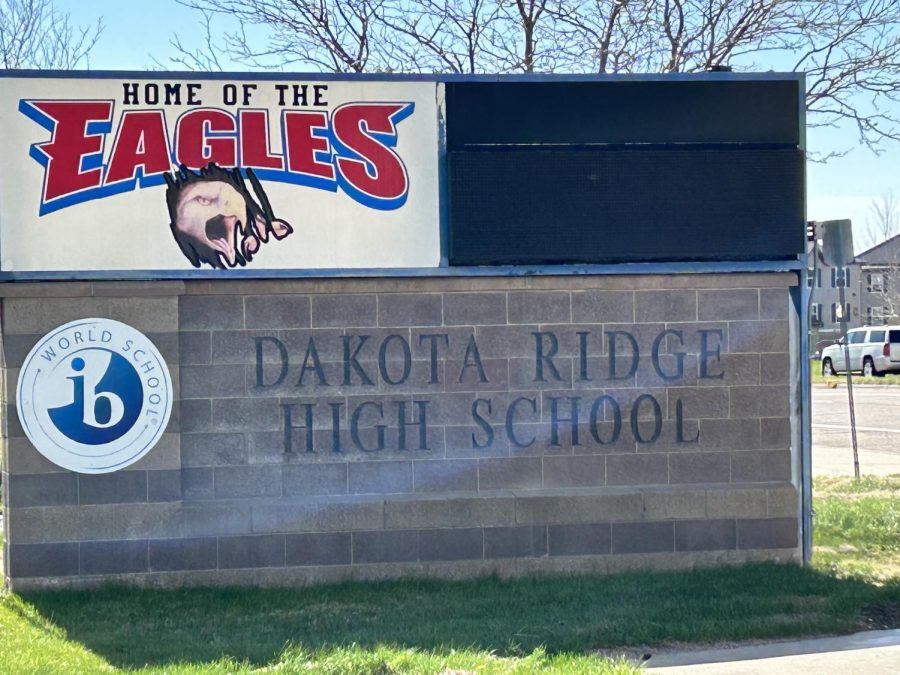Jefferson County Schools are Losing Money
“We are very cautious with any additional spending. That is the reason why the marquee out front is down. I don’t have $30,000 to spend on technology to make it work. If I did have the money, I would rather see it go into the classrooms,” DRHS principal Kim Keller said.
April 27, 2023
Schools around the nation are making cuts to their budgets, but why? With dropout rates in Jefferson County being the highest they’ve been in three years, covid making virtual school more desirable, living in the county being so expensive, and living wages being as low as they are, Jefferson County’s school budget is taking a turn. From not being able to print copies, to teacher cuts, to 16 school closures this year, the Jefferson County school budget cuts affect all.
The why:
Schools gain their budget based on how many kids are in the school, and with more students in Jefferson County dropping out of high school, being pulled out to be homeschooled, or just transferring out of the Jefferson County school district, Jefferson County, and even Dakota Ridge, can’t keep up.
Dakota has a graduation rate of 94.1% with a dropout rate of 0.9%, higher than Chatfield, yet lower than Columbine. Jefferson County’s drop-out rates for 2021-2022 reached a high of 1.8%, the highest it’s been in three years — 1.3% of students dropped out in 2018-2019. DRHS has a student population of 1,344 and a student-to-teacher ratio of 18.89, compared to Jeffco Virtual Academy, which has a student population of 1,446 and a student-to-teacher ratio of 16.29. This means that more teachers at DRHS have higher class numbers, yet fewer total students, in comparison to virtual schools in Jefferson County.
Dakota Ridge High School’s district board member, Mary Parker, gives a little more context, saying, “We have to watch out and figure out why. It depends on the grade level, because the closer you get to the years where you can go out and work on your own or do other things, that’s when it could really be dramatic. At the lower level, it’s very possible that parents are choosing to do homeschooling. So they’re not really dropping out, they’re just dropping out of the public schools,” Parker said.
Some teachers agree that due to budget cuts students may have fewer resources and may, in turn, feel less connected or safe at schools.
“I think students feel that, generally, the schools and the school districts don’t really care about them,” DRHS English teacher Aerin Bender said.
Less of a budget means having to cut teachers and counselors.
“We have fewer support staff, like mental health professionals or social workers, as a result of budget cuts,” DRHS art teacher Pamela Webb said. “That leaves them feeling more alone. So, I do think it has a big effect on how we can help students succeed and how not to just feel like a number, and like a cow in a field. And in a sea of other students, they don’t feel like individuals when someone can’t create a close relationship with them.”
Matthew Zeman, a social studies teacher at DRHS, adds, “It makes me disheartened when our communities have very pessimistic views on youth, based on lousy anecdotes.”
School budgets come from student enrollment, and without students, there is a lower budget. In essence, it means fewer resources are available to students and staff.
“There is restricted access to resources, not just the really cool kinds of things like breakout boxes or art supplies, or that kind of thing, but just basic copy budgets,” Bender said. “The larger effect is that we have to cut positions and those teachers who are very much a part of this family.”
Art supplies, tissues, copy paper, new library books, and more are being cut from the school’s available materials. Many departments are suffering, with the school library being one of them.
“We had about half of our budget being taken away this year, to go to other things which was just necessary,” DRHS librarian Mallory Goetz said. “But it definitely affected our ability to buy new books, to have different library programs — we had to kind of re-think what we could do this year.”
Schools get their money from how many kids they have, yes, but they also have other sources. This year, Colorado schools got $9,350 per student enrolled. Jefferson County schools get most of their budget money from local property taxes, totaling 49% this year. Student fees, athletic fees, and other fees only make up 7% of Jefferson County’s school resource flow, and the state gives Jefferson County 35% of their total funds. Finally, grants contribute to 9% of the money the district has. For the general fund of Jefferson County, the total revenue was $827,758, yet the budget was $855,563. Next year’s budget is expected to go up a total of 5.4%.
Jefferson County has been short on money for the schools they’ve been keeping open, and to keep them going, Jeffco has dug into the reserved money they have.
“The main thing is student enrollment, and that’s why we ended up closing schools, because we just don’t have enough students to fill the number of schools we had,” Parker said. “We are currently, this year, running what would be called a deficit. We are going into our reserves, or our savings account. Luckily, we had a good one in Jefferson County. One of the reasons why we got ourselves into this deficit spending is because we gave teachers and other support staff a pretty good raise last year, which they definitely deserved. In fact, they need even more.”
Colorado’s beginning salary rate per hour is about $13.65 for retail workers and $7.25 for food workers. Teachers in Jefferson County make a starting wage of $50,000 a year. To live reasonably in Jefferson County, for one adult with no children, requires about $42,116; with one adult and an average number of 2 children per household, the adult would need to make $115,448 a year, and it goes up from there. With a spouse–that also works–living in Jefferson County would cost less per person; however, with the older generations finding housing becoming more expensive, they are also finding it harder to leave their current house in the district. Consequently, newer families are having a harder time finding affordable housing, let alone housing in general. Without newer families that have children eligible to go to school, they go out of the county, and, in some cases, out of state.
“Jeffco has a severe demographic problem in the next 10 years,” Zeman said. “The county is shrinking, people are getting older but not moving, so you have these weird demographic and housing dilemmas, to where the county isn’t growing. It’s too expensive for young families to move into these neighborhoods.”
What can we look for in the next few years as a school?

“From monitoring the middle and elementary school enrollments, we will probably continue to go down in enrollment which will result in less money to the school,” DRHS principal Kim Keller said.
Over the past three years, the Jeffco community has seen a decrease in student enrollment, the highest being in 2002, and slowly dropping from there. The forecast for the future is, just as Keller said, most likely going to go down.
Jefferson County’s justification for these cuts adds up to student enrollment loss, age and wants from the property owners, and the cost of living in Jefferson County.
“Some of the reason in Jefferson County is, we have an aging population, but we’re staying in our homes because we like them, and we don’t have any kids in the system,” Parker said. “When that happens in neighborhoods, you’ll find a dropout, and then eventually the homes will turn over, and new families will come in. It’s expensive to live in Jefferson County, so people are choosing to go to school, or just live, a little bit further out.”
Our population and school numbers are decreasing; the money flow in Jefferson County isn’t as it should be; living in the county and in Colorado, in general, is expensive and hard to maintain. These all impact the schools we go to, and the ones we don’t.



